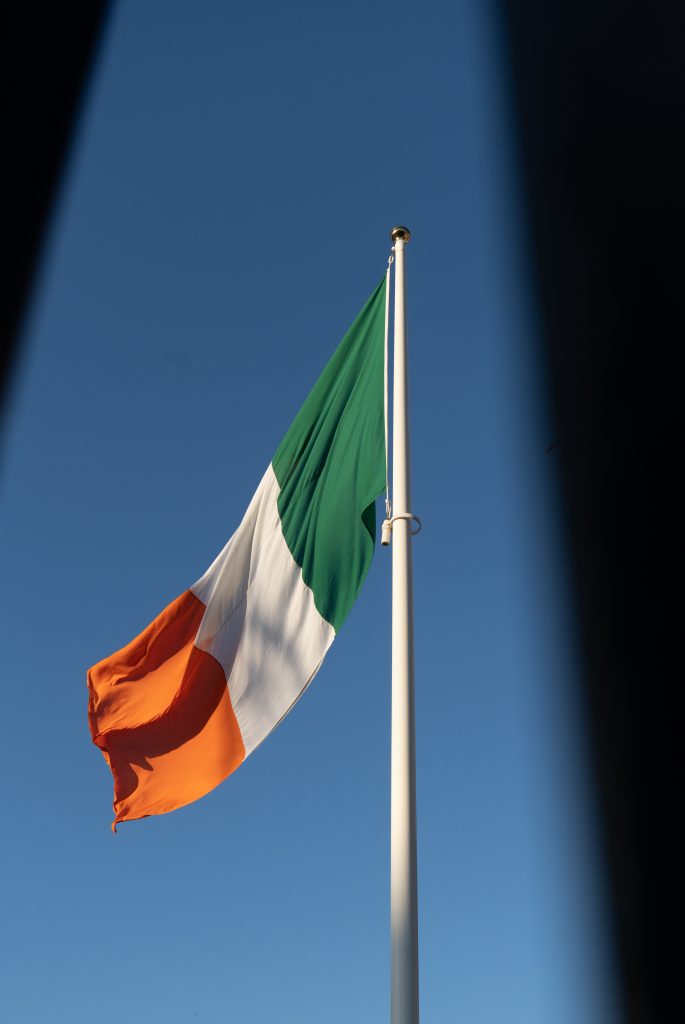According to the most recently published results, Ireland’s leftist party Sinn Fein won the popular vote and gained more parliamentary seats than ever before in the national election held this past weekend. These results contrast years of a long-standing political status quo. For about 90 years, two center-right parties Fianna Fail and Fine Gael have shared control of Irish politics, each party periodically trading power with one another, which journalist Benjamin Mueller refers to as a “duopoly,” (Mueller, 2020). After this previous weekend however, the Irish Parliament, which has 160 seats, has a significant third party presence. With Fianna Fail on track to have 45 seats, Sinn Fein with 37 seats, Fine Gael with 36 seats, and the rest belonging to smaller left-wing parties, control of Parliament will need to be solved through negotiations and coalitions, although both of the major parties have no intentions of forming any alliances with Sinn Fein (New York Times). Not only is it significant that a political system dominated by two parties for so long now has a third party with significant power and public support, but Sinn Fein’s controversial history and negative reputation in Irish politics further complicates the matter.
Sinn Fein is a left-wing party founded in the early 20th Century, and for many years the party acted as the political wing of the Irish Republican Army, which fought for Irish unity and Independence from Great Britain during the Anglo-Irish War, and for the Catholic nationalists in Northern Ireland over many decades of conflict between Protestants and Catholics in Northern Ireland commonly referred to as ‘The Troubles.’ Despite Sinn Fein and the Irish Republican Army both disassociating from one another, the Irish political party has long been ostracized. It was even banned in the United Kingdom until 1974 (Cowell-Meyers, 2020). During the campaign period leading up to the most recent election, the Prime Minister of Ireland Leo Varadkar, who is a member of Fine Gael, said that the long-ostracized Sinn Fein is “not a normal party.” Due to Ireland’s vote allocation system, Leo Varadkar will remain Prime Minister of Ireland, and clearly has no interest in respecting the influx of Sinn Fein members into the Irish government (New York Times). Given that Ireland uses a parliamentary system, it certainly does not seem impossible that a third party was able to seize such a grand chunk of ruling power from the two major parties, although in order to understand how such a feat could be accomplished by an disreputable party, one must look at the current state of Irish politics.
It is clear that the reemergence of Sinn Fein is an act of protest against the two major parties by the Irish voters. The resort to a third party, especially one so infamous as well as drastically different from the two others, reveals a feeling of frustration and desperation for something different. Irish politics has seen decades of stagnation. With many people concerned about economic issues such as housing, and many younger voters yearning for social change, many felt that politicians do not listen to their wishes. As one man interviewed described it: “the rich get richer and the poor get poorer, but their policies all stay the same,” when asked about the Irish government (Mueller, 2020).
Many people simply refrained from voting over the years, as they feel completely disconnected from the two parties who do not appear to have their best interests in mind. Despite this trend, the referendums legalizing gay marriage and overturning an abortion band in recent years have made politics more attractive to younger and dissatisfied voters. These two referendums made people feel like their voices could actually be heard. It isn’t shocking to find that many voters described Sinn Fein in a similar fashion, as the party that people can trust. As a result, Sinn Fein received significant support from younger voters, for whom the party’s past has faded out of their memories (New York Times). Sinn Fein’s anti-establishment campaign motivated people who were fed up with the government to vote against the current political machine, and give power to a different party.
This recent election in Ireland is certainly unique as it is quite interesting to see a party with historically negative associations regain legitimacy with voters. Having said that, the greater meaning of these election results seem to follow a global trend of anti-establishment candidates or parties experiencing success in elections around the world. Journalist Patrick Cockburn simply labeled the results as “Ireland’s ‘Brexit moment’,” (Cockburn, 2020). Furthermore, he compares the behavior of Irish voters to that of voters in the UK and in the US. According to Cockburn, the thing that all of these voters share in common, is not for example, Irish voters voting for Sinn Fein because of their frustration with the current health care system, but instead all three countries experiencing elections in which parties or candidates expressing nationalist sentiments win large quantities of support. Although Cockburn’s comparison is accurate, it is tough to compare Sinn Fein’s success to phenomenon such as Trump’s election due to the fact that Sinn Fein is a left-wing party, and supporters of Donald Trump in the US and Brexit in the UK are no left-wing. I would compare the success of Sinn Fein partially to the success of nationalism in countries like the US and UK, although I would also tie it to elections in other countries such as support for Imran Khan in Pakistan. Similar to the case in Ireland, Imran Khan tapped into emotions of feeling left out of the political process and gained the support and interest of the youth voters to challenge to the political status quo (Al Jazeera, 2013).
It will be fascinating to see how the incoming third party shakes up the Irish Parliament. Given convincing evidence that few alliances will be made between the two center-right parties and Sinn Fein, it is possible that the stagnation persists and Sin Fein’s reemergence was nothing more than a message sent by voters. The question going forward is whether or not this is a one-time occurrence or if Sinn Fein is to remain a powerful political force in Ireland. Furthermore, as elections continue to occur, we will be able to see if this trend of nationalism and anti-establishment voting will keep its popularity or if it is just a short political trend that countries around the world will soon get past. What happens of Sinn Fein in its new position of power can serve as a possible indicator of how this global trend will make out around the world.
Works Cited
Cockburn, Patrick. “Patrick Cockburn: Sinn Fein’s Election Victory Is Ireland’s ‘Brexit Moment’ When Left-out Voters Turn on the Elite.” The Independent, 14 Feb. 2020, www.independent.co.uk/voices/sinn-fein-ireland-election-victory-brexit-politics-elite-a9336496.html.
Cowell-Meyers, Kimberly, and Paul Arthur. “Sinn Féin.” Britannica, 14 Feb. 2020, https://www.britannica.com/topic/Sinn-Fein.
“Imran Khan: Pakistan Decides | People & Power.” Al Jazeera, 13 June. 2013, https://www.youtube.com/watch?time_continue=5&v=OPyjIf_igRc&feature=emb_title.
Mueller, Benjamin. “Irish Voters Cast Off Relic of Entrenched 2-Party System.” New York Times, 12 Feb. 2020, https://www.nytimes.com/2020/02/12/world/europe/ireland-election-sinn-fein.html?searchResultPosition=3.
Mueller, Benjamin. “Sinn Fein on Threshold: Party With Old I.R.A. Ties Soars in Irish Election.” New York Times, 9 Feb. 2020, https://www.nytimes.com/2020/02/09/world/europe/ireland-election-sinn-fein.html?searchResultPosition=1. *Main Source Used

